Are you dreaming of sunshine, white sand beaches and breathtaking landscapes? You're in the right place! Let's go together to discover French Polynesia, a small piece of paradise lost in the Pacific.
Tahiti , Bora-Bora Moorea... these names are probably familiar to you! Nothing surprising as these heavenly islands represent, in the collective imagination, French magnificence. Yet, beyond the exceptional landscapes, this Overseas territory hides a breathtaking ancestral culture that must be known.
From the flower of Tiare (the symbol of Tahiti), to the traditional polynesian chants or the famous international race of pirogues: Hawaiki nui va’a, the French Polynesia is full of surprises.
Let's go together to discover his story!
Immersion in French Polynesia
An immense territory
You must know French Polynesia, you may have even dreamed of crowding the sand of its beaches... Yet, few are those who imagine the greatness of this territory, also called “Tahiti and its islands”. No less than 2.5 million km2 separate the 118 islands that make up this corner of paradise!
Composed of 5 archipelagos (the archipelago of the Society that contains the islands of the Wind and the islands of the Sous-le-Vent, the archipelago of the Tuamotu, the archipelago of the Gambiar, the archipelago of the Australes and the Marquises Islands ), French Polynesia finds its place in an area rich in history: the Pacific Ocean.
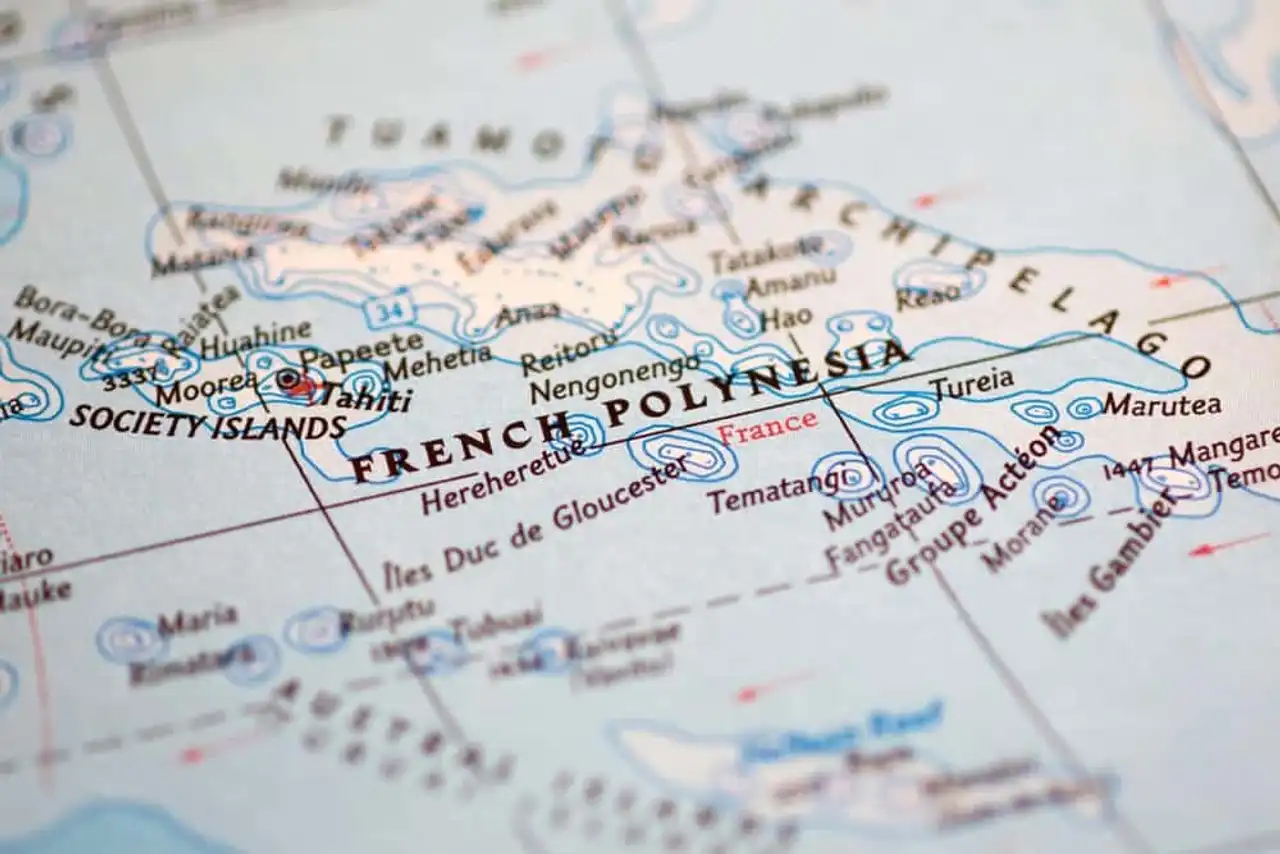
Photo credit: Shutterstock – spatuletail
A History that passes through the centuries
According to legend, the first humans to have trampled these lands would come from Southeast Asia. They then landed on these islands in the year 300...
Later, in the early 18th century, Europe is in the conquest of the world! A conquest that definitely marks the History of Polynesia, when European browsers first encounter Polynesians at the end of the 18th century.

Photo credit: Shutterstock – Marzolino
It follows difficult years, marked by epidemics that weaken the Ma’ohi people. The Europeans, in their frenzy of power, are becoming more and more numerous in the territory and fighting influences. France finally settled in Tahiti in 1842 and gradually impose its protectorate.
A broad autonomy from France
The Pacific battalion – a group of Polynesian soldiers – provides important assistance to France during the First and Second World War. This help, provided in one of the saddest times on our planet, will allow the Polynesian people to obtain the right to vote in 1946.
The post-war years marked the return of Polynesian culture to their islands, the latter having so far lost its superb, after the arrival of Europeans. Two laws, established in 1977 and 1984, will change the future of Polynesia forever! The first relates to self-management, and the second concerns internal autonomy.
From then on, we are at a turning point in Ma’ohi History! The status of French Polynesia changes completely since Metropolitan France gives it a broad autonomy. This is why today Polynesia is the most autonomous territory of the Republic.
You will understand it quickly on this journey since the local currency is not the euro, but the peaceful franc (as in New Caledonia and Wallis-et-Futuna).
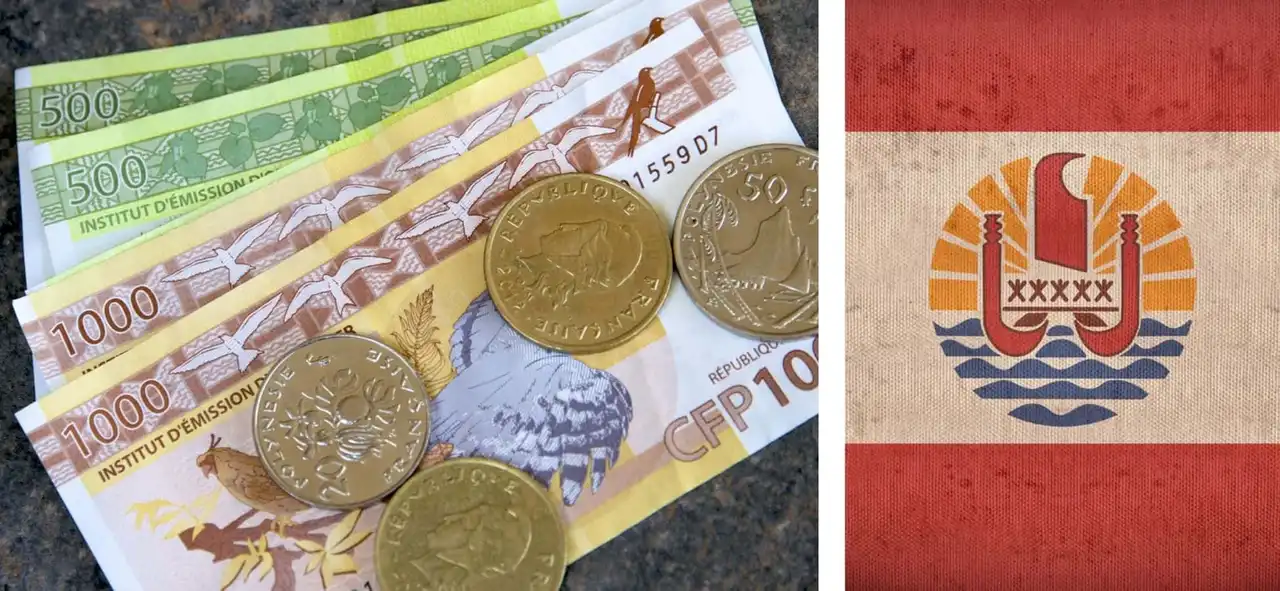
Pacific (left) and Polynesia Flag (right). – Photo credits: Shutterstock – Michael Leslie ' Wasan Ritthawon
A culture inherited from their ancestors my ohi
Each Polynesian finds his strength in "the mana" a spiritual power that would live in certain objects and certain people. Mana is a force, a power that you feel when you are in communion with nature.
These Polynesian beliefs have an exceptional history as they come from their famous Ma’ohi ancestors. The legacy of this mythical adventurer people crossed years and centuries, despite the arrival of Europeans. Moreover, this heritage is still particularly present in the heart of Tahiti and its islands.
The latter has left the Polynesians a real reputation as warriors. Warriors forming around the values of courage, strength, respect, humility and selflessness . These are always the same values that are transmitted today, from generation to generation in Polynesia.
These traditions are particularly important, since they rhythm life in French Polynesia. From dances to traditional songs, to tattoos, these customs are carefully transmitted and maintained.
Traditional dances and songs, resistance marker
The arrival of Europeans marked the Polynesian people and their traditions with red iron. By banning the practice of traditional dance and singing, Europeans have weakened a legacy that has yet crossed centuries.
It was without counting on the strength of the mana and this people, who, despite the prohibitions, brought these traditions back to the taste of the day to the twentieth century. These arts immediately regained their importance in polynesian culture. Today, traditional dances and songs represent the sacred expression of Polynesian life and beliefs.
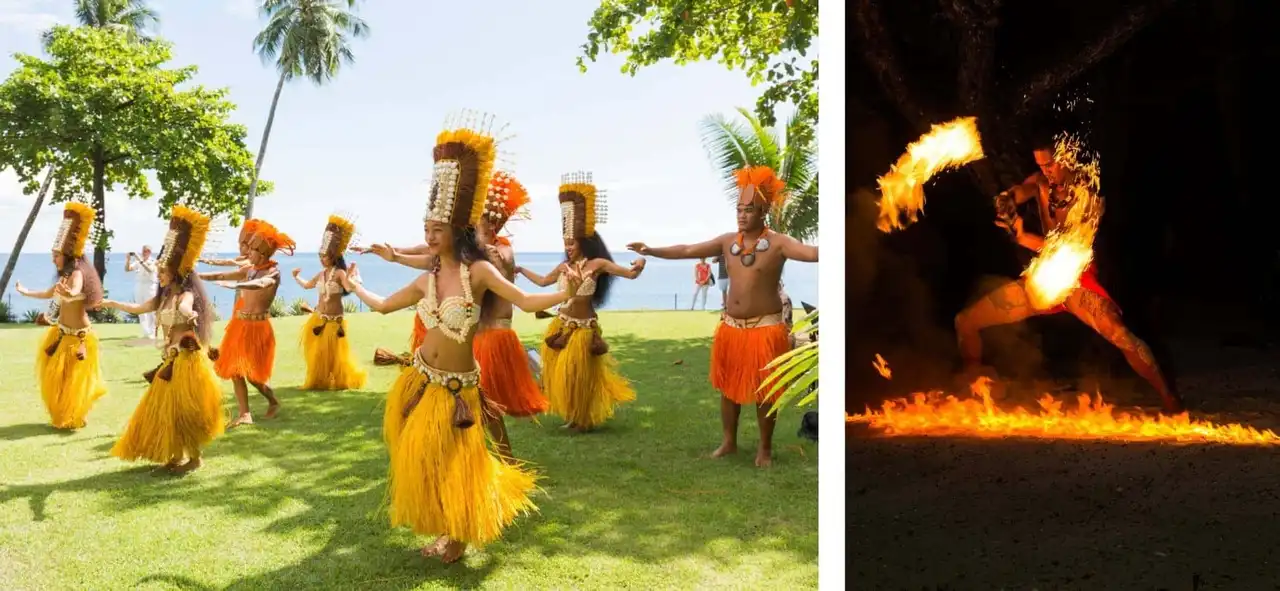
Photo credit: Shutterstock – sarayuth3390 < Uladzik Kryhin
Everywhere in each island, drums, ukuleles and other traditional instruments are heard. The enthusiasm around dance and music on these islands is indescribable. Especially during Heiva which takes place in July in Papeete. This contest of dances and songs, very festive, brings together all the troops from the archipelagos around Tahiti and lasts a whole month.
Polynesian tattoos, the sacred art of polynesian culture
According to legend, the Polynesian tattoo would be of divine origin and would have been transmitted to men by the two sons of the god Ta’aroa Mata Mata Arahu and Tu Ra’i Po. In fact, for the people ma’ohi, they are considered today as the gods of tattoo. For a long time also, the tattoo was an important step between adolescence and adulthood in Polynesia.
Banni during the arrival of Europeans, he resumed his sacred place in Polynesian culture and even exported all over the world.
You now understand why a lot of polynesians are tattooed. The art of tattoo is intangible, it has developed its own patterns in each archipelago. He is the artistic expression of the personal history of each polynesian .
A unique biodiversity
French Polynesia is one of the destinations whose simple evocation is enough to dream. The natural treasures available to Tahiti and its islands immediately transport us to a unique world. Between white sand beaches, turquoise blue lagoons, coconut trees with a loss of sight, our trip to Polynesia now takes all its meaning!
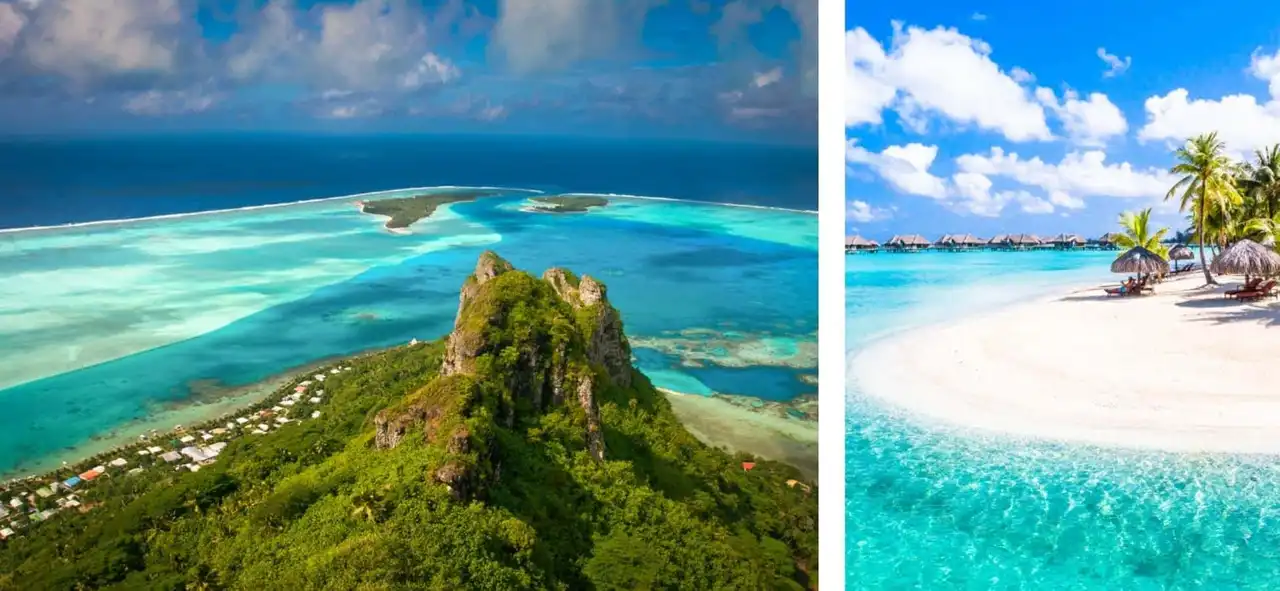
View on the Maupiti mountain peak and on a Bora-Bora beach. – Photo credit: Shutterstock – Piotr Gatlik & Marcelo Alex
Natural richness and exceptional lagoons, a trip to paradise
If you ask a most invaluable Polynesian of the goods, he will tell you without hesitation that it is the incredible ecosystem and the wealth of its land. The idyllic landscapes, the cultural richness and beauty of the lagoons make us want to spend time contemplating Polynesia forever.
Polynesia lagoons are singular, probably the most beautiful in the world. In the coral gardens live exceptional underwater species.
Tortues, dolphins, manta rays, sharks, multicolored fish... a real picture of nature awaits us under water!
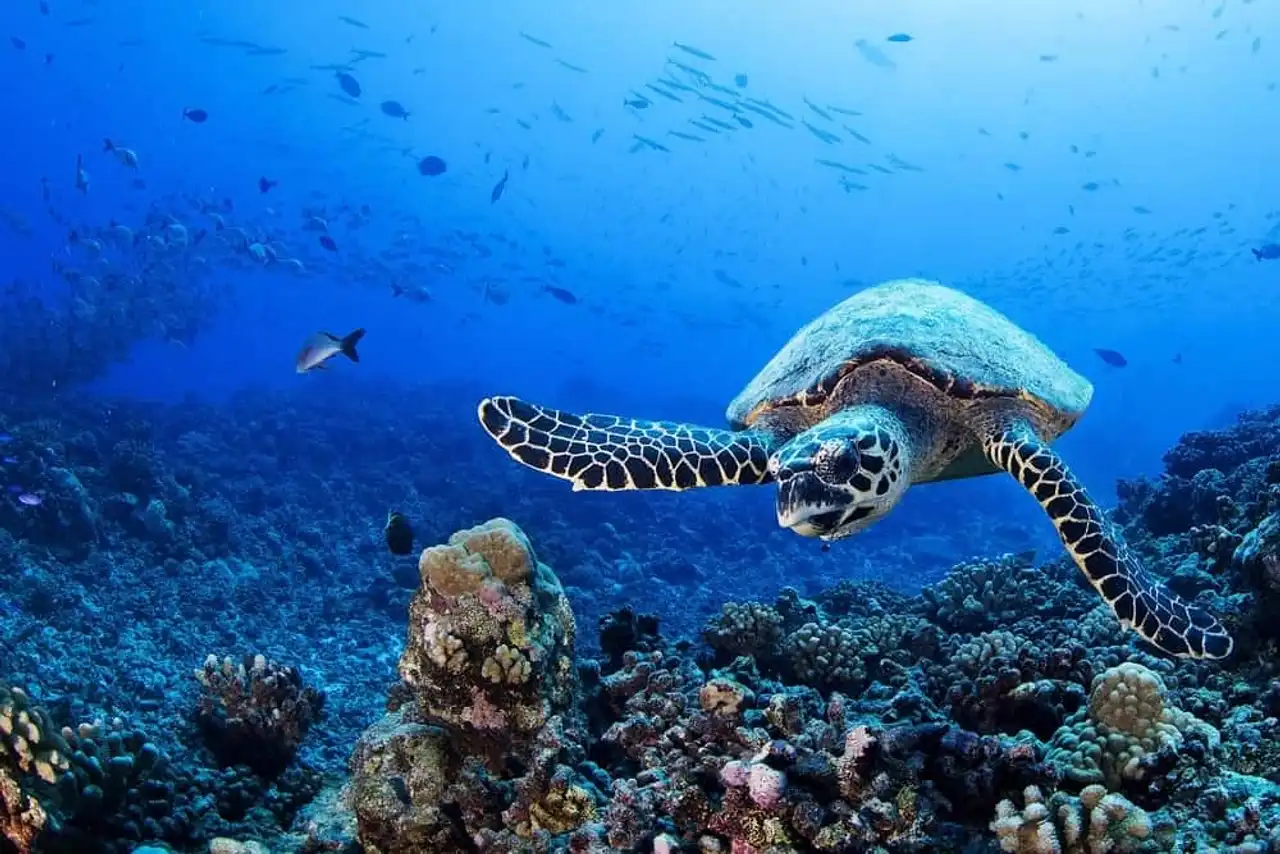
Photo credit: Shutterstock – J.S. Lamy
A separate and preserved island: the example of Maupiti
A small island named Maupiti has been leading to major hotel groups for years. This tiny territory has chosen to preserve its authenticity and its wild side at all costs!
Unlike his sisters Tahiti, Bora-Bora and Moorea, there are no hotels on the island , nature is breathtaking and preserved from mass tourism.
Watch out, our stopover in Maupiti is likely to put your eyes on it!
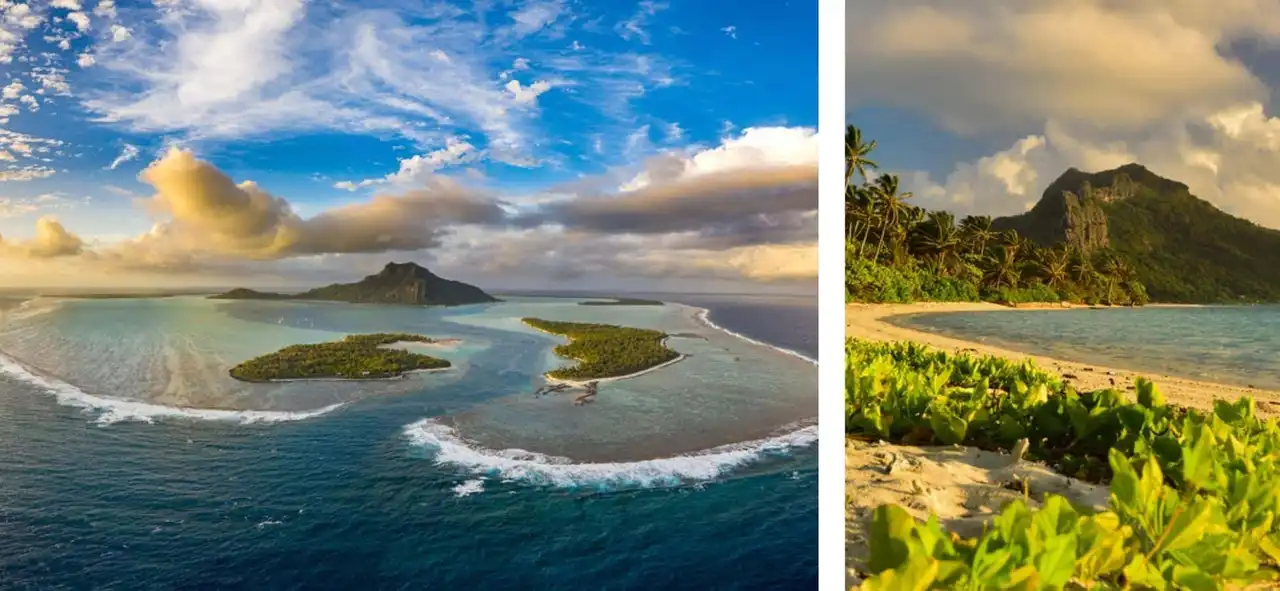
Beautiful view of the island of Maupiti and one of its beaches – Photo credit: Shutterstock – DronaVision & Stanislav Fosenbauer
On this island, there are only a few family pensions, the best way to get immersed in local daily life. People live there very simply: fishing, canoe, local fruit culture...
A unique opportunity to enjoy the sun, the white sand beaches lined with coconut trees and an exceptional blue turquoise lagoon. Everything, in a unique simplicity and authenticity... paradise, nothing but for you!
An unforgettable welcome
Beyond the exceptional landscapes of this little piece of paradise, the reception of Polynesians could mark us forever. Because it is not a simple legend... The Polynesian population is warm, welcoming and generous, as anywhere else. For centuries, the sense of reception is unique in Polynesia.
Flower necklaces as a welcome symbol
This feeling, we feel it as soon as we arrive at the airport where we see ourselves offering a necklace of flower with an exhilarating, intoxicating scent of Tiaré’s flower to tell us welcome.
More than just a flower, it is the national emblem of French Polynesia that is offered to us. The songs and dances that accompany our arrival around the ukulélé immediately mark our journey. We understand that the latter will be unforgettable.
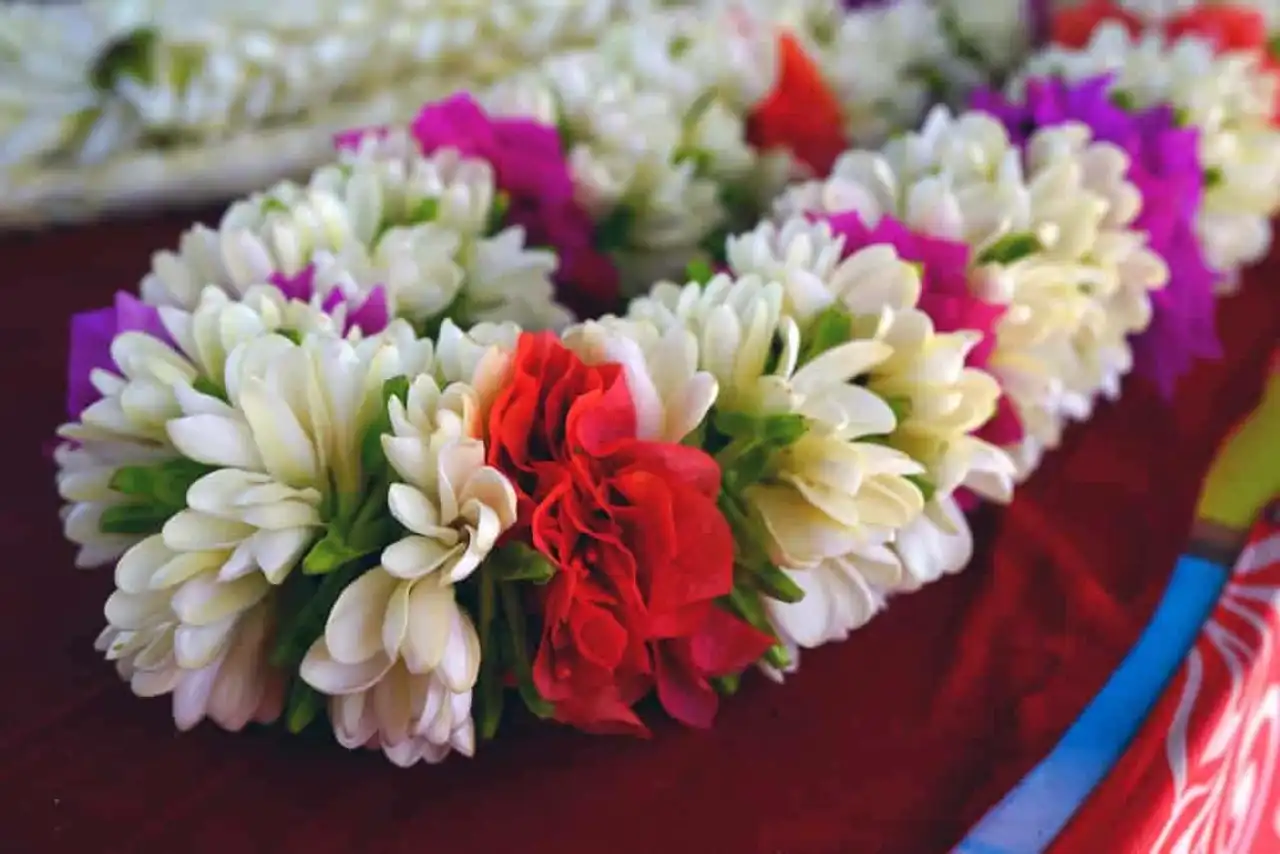
Traditional welcome necklace with flowers of Tiare. – Photo credit: Shutterstock – EQRoy
Polynesians: an unparalleled kindness
Polynesians know how to make people comfortable with their smiles, their joy of living and their unparalleled kindness. Their sense of sharing is indescribable, unimaginable, extraordinary!
They communicate very easily with all those around them, with remarkable ease. Moreover, in Polynesia, there is no sense of self-confidence: here everyone is silent, says hello... We may hear «ia ora na » (Hello in Polynesian) all day.
What may seem anecdotal is actually very representative of the way polynesians think. It is a very humble people, open to others and social barriers do not have their place in this sublime territory.
Shell necklaces as a message of goodbye
As our journey ends, we discover a last surprise at the time of departure. If our discovery of Polynesia has been rich in encounters, admirations and pleasures, it is in a rain of emotions that it ends. The Polynesians, to mark this moment of “the farewell” sometimes too formal, know how to make it special, unique. So we'll leave the heavy heart but... with several necklaces of shells around the neck.
This Polynesian tradition means that the person who offered us this necklace, wishes to see us return to Polynesia. A sign of respect and friendship, which touches us by its meaning.
The canoe: national sport
But before take-off, there is still a final step that we need to talk about... How to finish this journey without talking about the Polynesian canoe, called « le va’a » true national sport in the Pacific?
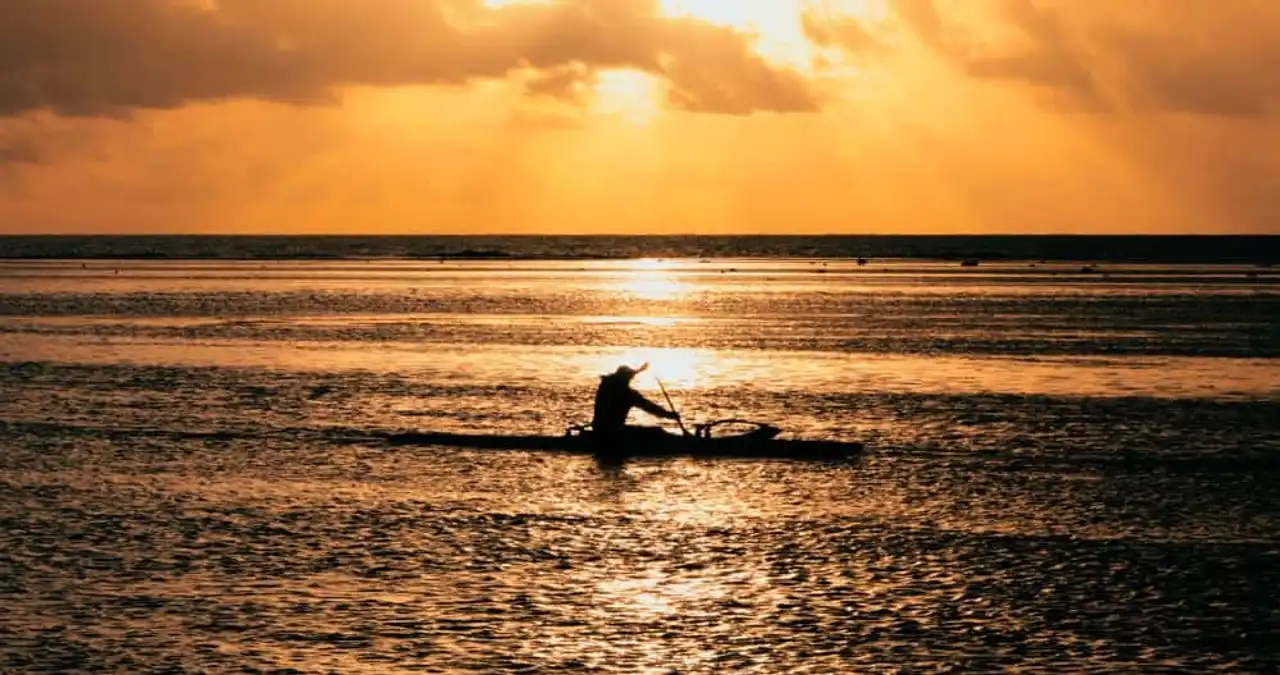
Photo credit: Shutterstock – Fly_and_Dive
Le va’a, true institution in Polynesia
This sport, very physical, requires a lot of coordination. More than just a sport, it is now an institution, a true legend in French Polynesia.
Several races take place in Polynesia each year, on short lagoon distances: 500, 1000 and 1,500 meters for speed. For the bravest, the challenge goes much further, on marathons in the high seas ranging from 30 kilometers to more than 150 kilometers.
Hawaiki nui va’a, the most famous race of va’a
The most famous of the races va’a is the emblematic Hawaiki nui va’a . This international race is a major event in Polynesia since it brings together the whole country but also other Pacific nations, usually in October or November.
For the men’s teams, the race represents no less than 125 kilometers, more than 9 hours of effort spread over 3 days! The three stages connect each year Huahine, Raiatea, Taha’a and Bora-Bora.
An experience that immerses us a little more, and for the beginning, at the heart of the Polynesian traditions.
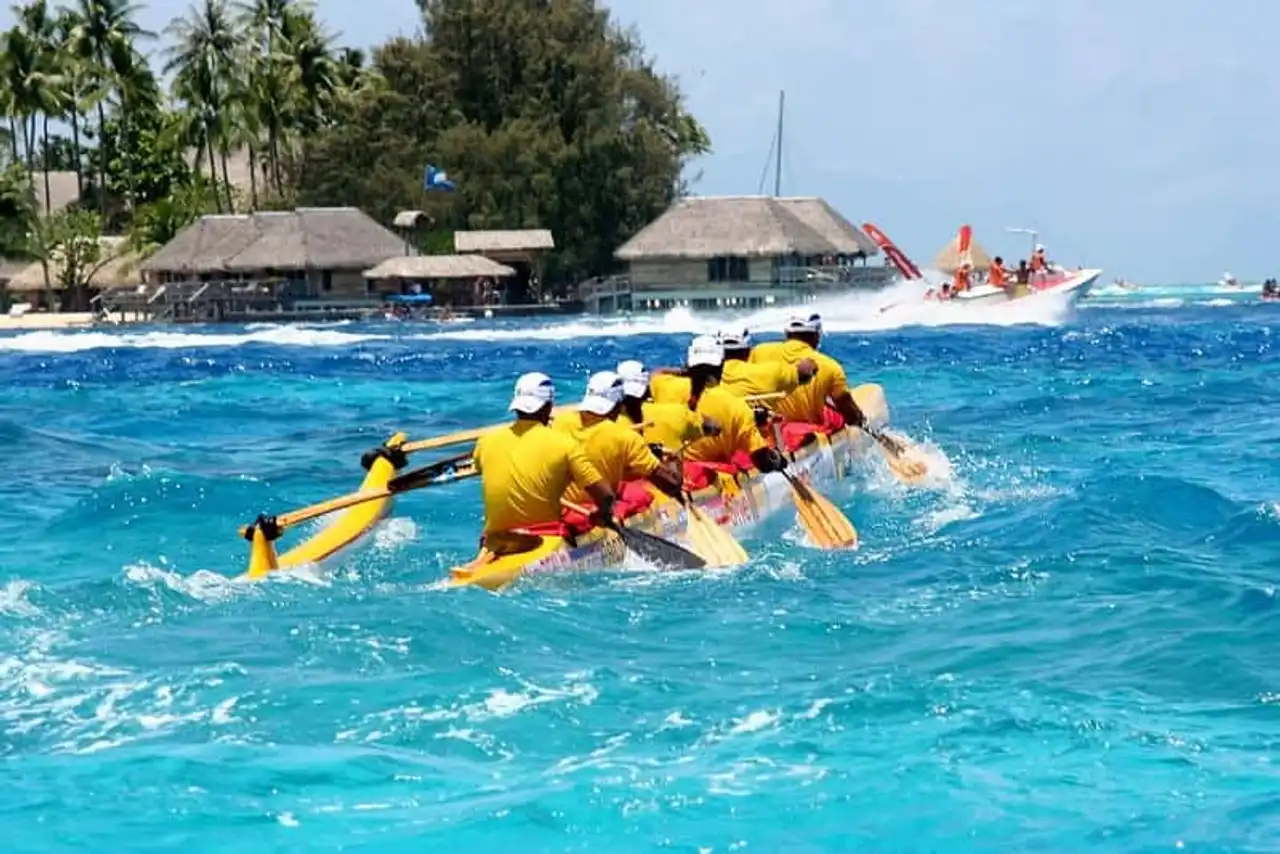
Photo credit: Flickr – Duncan Rawlinson – Duncan.co
All good things unfortunately have an end. After enjoying the last moments with our Polynesian friends, it is time for us to return. Our exotic journey, and especially idyllic in French Polynesia, is over. It is with the big heart and filled with memories that we leave this little piece of paradise in the Pacific.
More than just a trip, he has allowed us to discover a breathtaking culture and an exceptional history, which he is looking forward to rediscovering. Until we get back, for all this "mauruuru roa" (thank you very much).
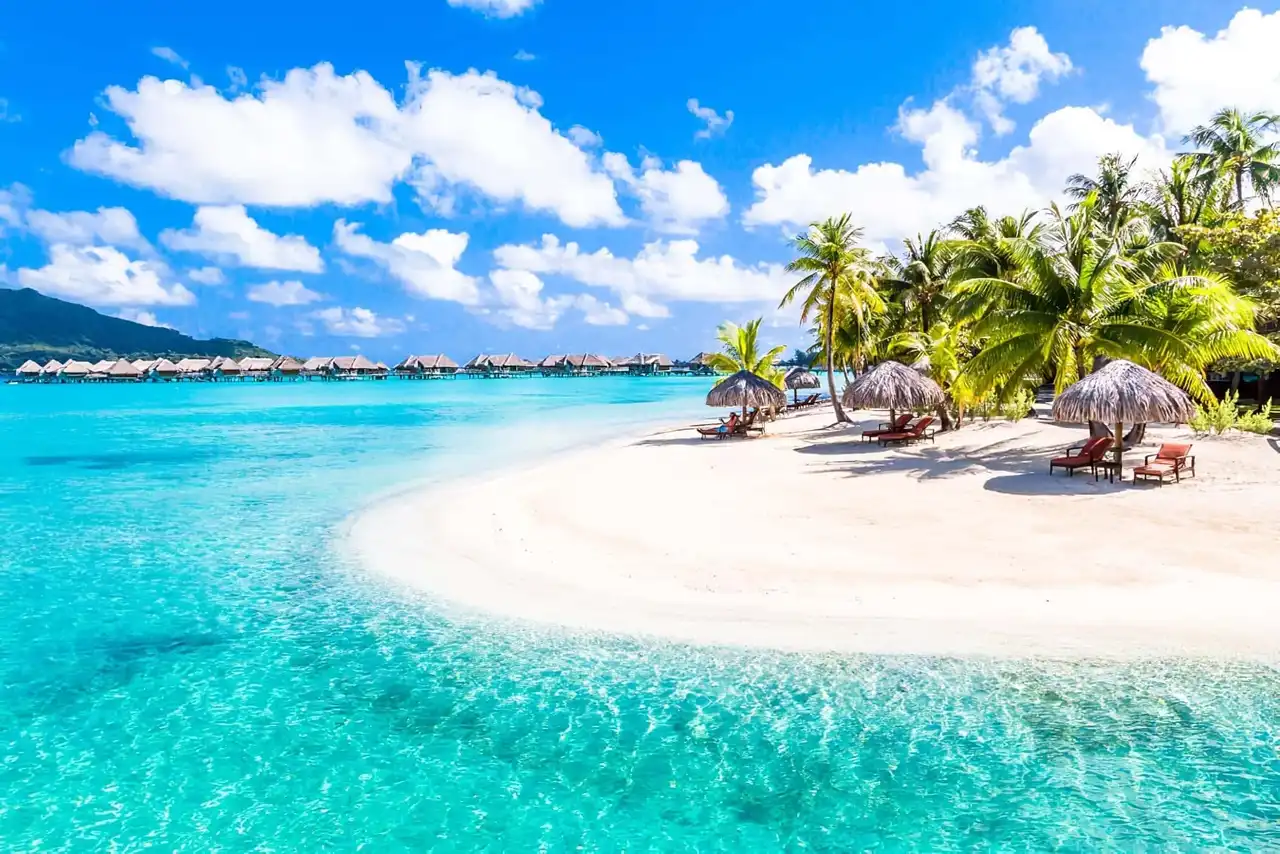




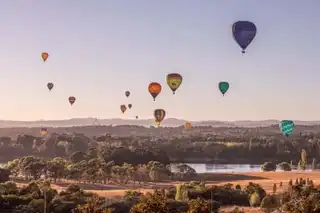
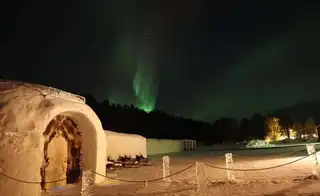

Loading comments ...